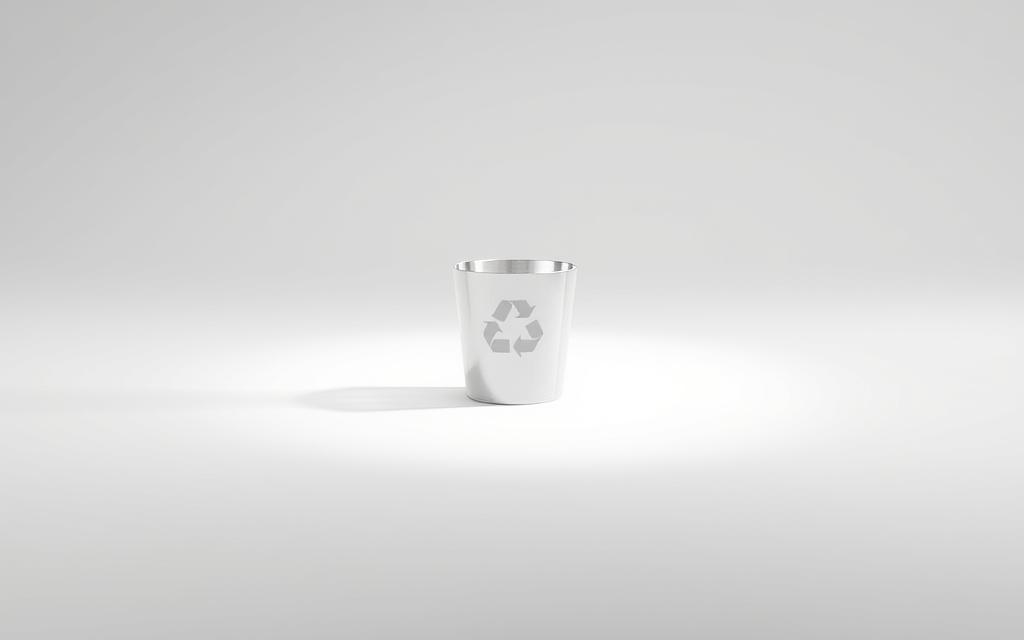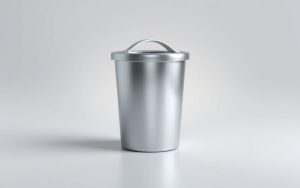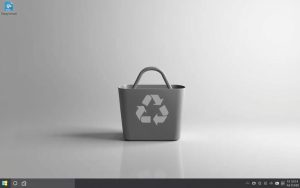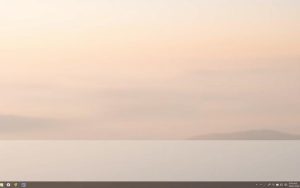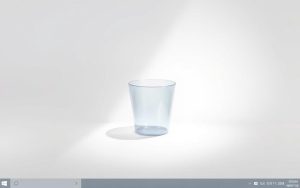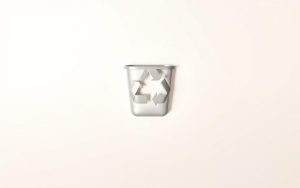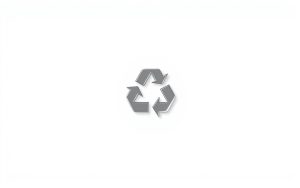Table of Contents
The Recycle Bin is a core feature in Windows, acting as a temporary storage space for deleted files. It provides a safety net, allowing users to restore items if needed. However, some prefer a cleaner desktop or want to avoid accidental deletions by removing the icon.
While the Recycle Bin cannot be permanently deleted, it can be hidden. This is particularly useful for those who value aesthetics or want to minimize clutter. The process is compatible across various Windows versions, including 11, 10, 8, and 7.
This article covers three primary methods: using Settings, the Registry, and the Group Policy Editor. Additionally, it includes solutions for recovering files in case of accidental data loss. Whether you’re streamlining your workspace or exploring customization options, these steps will help you achieve your goal.
Introduction to Removing the Recycle Bin
Windows includes the Recycle Bin by default, but customization is possible. This feature acts as a safety net for deleted files, allowing users to restore them if needed. By default, the icon appears on the desktop, but it’s not always necessary for everyone’s workflow.
Removing the Recycle Bin icon can benefit those who prefer a minimalist workspace or want to reduce clutter. It’s important to note that hiding the icon doesn’t delete its functionality. The system will still store deleted files in the background.
Before proceeding, ensure you’ve emptied the Recycle Bin to avoid losing important data. Accidentally deleting files can happen, but recovery options are available. This ensures peace of mind while customizing your desktop.
Here are some scenarios where removing the icon is beneficial:
- Creating a cleaner, more organized workspace.
- Minimizing distractions for focused workflows.
- Preventing accidental deletions by reducing visible icons.
By understanding these aspects, you can make an informed decision about customizing your computer’s appearance. The next sections will guide you through the process step-by-step.
Method 1: Remove Recycle Bin from Desktop in Settings
Customizing your workspace starts with adjusting system settings. This method is straightforward and works across modern Windows versions. By following a few simple steps, you can hide the Recycle Bin icon from your desktop.
![]()
Step 1: Open Windows Settings
Begin by accessing the Settings menu. Press Win+I on your keyboard or right-click the desktop and select Personalize. This opens the customization options for your system.
Step 2: Access Desktop Icon Settings
Navigate to the Themes section and click on Desktop icon settings under the Related Settings submenu. This is where you can manage the icons displayed on your desktop.
Step 3: Uncheck the Recycle Bin Box
In the Desktop Icon Settings window, uncheck the box next to Recycle Bin. Click Apply and then OK to save your changes. The icon will no longer appear on your desktop.
“A clutter-free desktop can significantly improve productivity and focus.”
If the icon persists, try restarting Explorer.exe. This ensures the changes take effect. For more detailed guidance, refer to this step-by-step tutorial.
| Step | Action |
|---|---|
| 1 | Open Settings using Win+I or right-click desktop. |
| 2 | Go to Themes > Desktop icon settings. |
| 3 | Uncheck Recycle Bin and apply changes. |
This method is compatible with Windows 11, 10, 8, and 7. It’s a quick way to achieve a cleaner, more organized workspace.
Method 2: Remove Recycle Bin from Desktop with Registry
Advanced users can leverage the Windows Registry to customize their desktop. This method involves editing system settings directly, providing greater control over appearance and functionality. However, caution is essential, as incorrect changes can affect system stability.
Step 1: Open the Run Tool
Press Win+R to open the Run dialog box. Type regedit and press Enter. This launches the Registry Editor, where system configurations are stored.
Step 2: Navigate to the Registry Key
In the Registry Editor, go to the following path:
HKEY_LOCAL_MACHINE\SOFTWARE\Microsoft\Windows\CurrentVersion\Explorer\Desktop\NameSpace. Locate the key named 645FF040-5081-101B-9F08-00AA002F954E. This key represents the Recycle Bin.
Step 3: Delete the Recycle Bin Registry Key
Right-click the key and select Delete. Confirm the action when prompted. Before proceeding, consider creating a system restore point to safeguard against potential issues.
Step 4: Restart Your Computer
After deleting the key, restart your computer. The Recycle Bin icon should no longer appear on your desktop. Remember, this method only hides the icon; deleted files are still stored in the background.
“Editing the Registry requires precision. Always back up your system before making changes.”
This method is ideal for advanced users who are comfortable with system tweaks. If you’re unsure, consider using simpler alternatives like adjusting settings through the Windows interface.
Method 3: Hide Recycle Bin from Desktop with Local Group Policy Editor
For users seeking advanced customization, the Local Group Policy Editor offers a powerful solution. This tool allows you to modify system settings, including the visibility of the Recycle Bin icon. It’s ideal for those who prefer a streamlined desktop experience.

Before proceeding, note that this method is only available in Windows Pro and Enterprise editions. If you’re using a Home edition, consider alternative methods like adjusting settings or editing the Registry.
Step 1: Open the Run Tool
Press Win+R to open the Run dialog box. Type gpedit.msc and press Enter. This launches the Local Group Policy Editor, where you can manage system policies.
Step 2: Access Local Group Policy Editor
In the editor, navigate to User Configuration > Administrative Templates > Desktop. This section contains policies related to desktop appearance and functionality.
Step 3: Navigate to Administrative Template
Locate the policy named Remove Recycle Bin icon from the desktop. Double-click it to open the settings window. Here, you can enable or disable the policy as needed.
Step 4: Enable the Policy
Select the Enabled option and click Apply, followed by OK. This action hides the Recycle Bin icon from your desktop immediately.
Step 5: Restart Your Computer
For the changes to take full effect, restart your computer. Once rebooted, the icon will no longer appear, giving you a cleaner workspace.
“Advanced tools like the Local Group Policy Editor provide unparalleled control over system settings.”
If you ever need to revert the changes, simply disable the policy or reset it to Not Configured. This flexibility ensures you can customize your desktop without permanent consequences.
- Available in Windows Pro and Enterprise editions.
- Provides precise control over desktop appearance.
- Easy to revert changes if needed.
How to Recover Permanently Deleted Files from Recycle Bin
Accidentally losing important data can be stressful, but recovery is possible. Whether you’ve emptied the Recycle Bin or deleted files permanently, tools like the EaseUS Data Recovery Wizard can help restore them. This software is versatile, supporting various file types and operating systems.

Common scenarios for data loss include accidental deletion or emptying the Recycle Bin. In such cases, acting quickly is crucial. Avoid saving new data to the drive, as it may overwrite the deleted files, making recovery harder.
Here’s how to use the EaseUS Data Recovery Wizard:
- Install the software and launch it on your computer.
- Select the drive or folder where the deleted files were stored.
- Run a scan to locate the lost data.
- Preview the files and select the ones you want to restore.
- Save the recovered files to a different drive to prevent overwriting.
“Data recovery tools like EaseUS provide a safety net for accidental deletions, ensuring peace of mind.”
For those seeking alternatives, tools like Recuva or Disk Drill are also effective. Each offers unique features, so choose one that fits your needs. Remember, the sooner you act, the higher the chances of successful file recovery.
By following these steps, you can retrieve lost data and minimize the impact of accidental deletions. Whether you’re a casual user or a professional, having a reliable recovery tool is essential.
Conclusion
Streamlining your desktop experience is easier than you think. Whether you prefer adjusting Settings, editing the Registry, or using the Group Policy Editor, each method offers a way to hide the Recycle Bin icon. Choose the approach that best suits your technical comfort and needs.
Remember, the Recycle Bin remains a vital safety net for deleted files. Always exercise caution when removing items permanently. For accidental deletions, tools like EaseUS Data Recovery Wizard can help restore lost data efficiently.
Customizing your computer’s appearance can enhance productivity and create a cleaner workspace. Explore these methods to tailor your Windows experience to your preferences. For more detailed steps, check out this comprehensive guide.
Have questions or tips to share? Leave a comment below or pass this guide along to others looking to optimize their desktop setup. Your time and effort will pay off with a more organized and efficient workspace.
FAQ
Can I remove the Recycle Bin icon from my desktop permanently?
Yes, you can permanently remove the Recycle Bin icon by adjusting settings in the Windows Personalization menu or using the Registry Editor.
Will deleting the Recycle Bin icon affect my files?
No, removing the icon does not delete your files. It only hides the shortcut. You can still access the Recycle Bin through File Explorer.
How do I restore the Recycle Bin icon after removing it?
You can restore it by revisiting the Desktop Icon Settings in the Personalization menu and rechecking the Recycle Bin option.
Is it safe to use the Registry Editor to remove the Recycle Bin?
Yes, but proceed with caution. Editing the registry incorrectly can cause system issues. Always back up your registry before making changes.
Can I hide the Recycle Bin without deleting it?
Yes, you can hide it using the Local Group Policy Editor or by unchecking the Recycle Bin option in Desktop Icon Settings.
What happens to permanently deleted files if the Recycle Bin is removed?
Permanently deleted files bypass the Recycle Bin and are erased from your system. Use data recovery software to retrieve them if needed.
Are there alternative ways to access the Recycle Bin after removing the icon?
Yes, you can access it through File Explorer or by typing “Recycle Bin” in the Start menu search bar.
Does removing the Recycle Bin icon free up storage space?
No, removing the icon does not affect storage space. It only hides the shortcut from your desktop.


